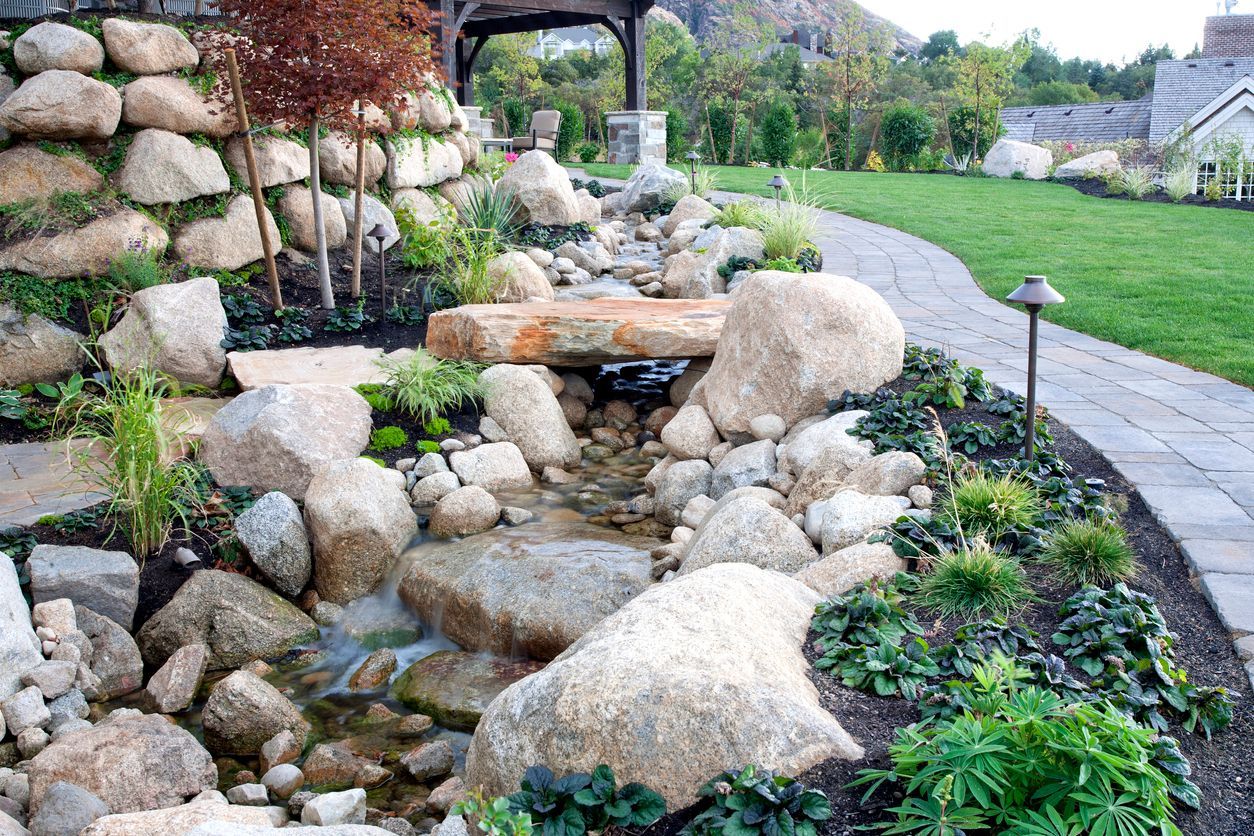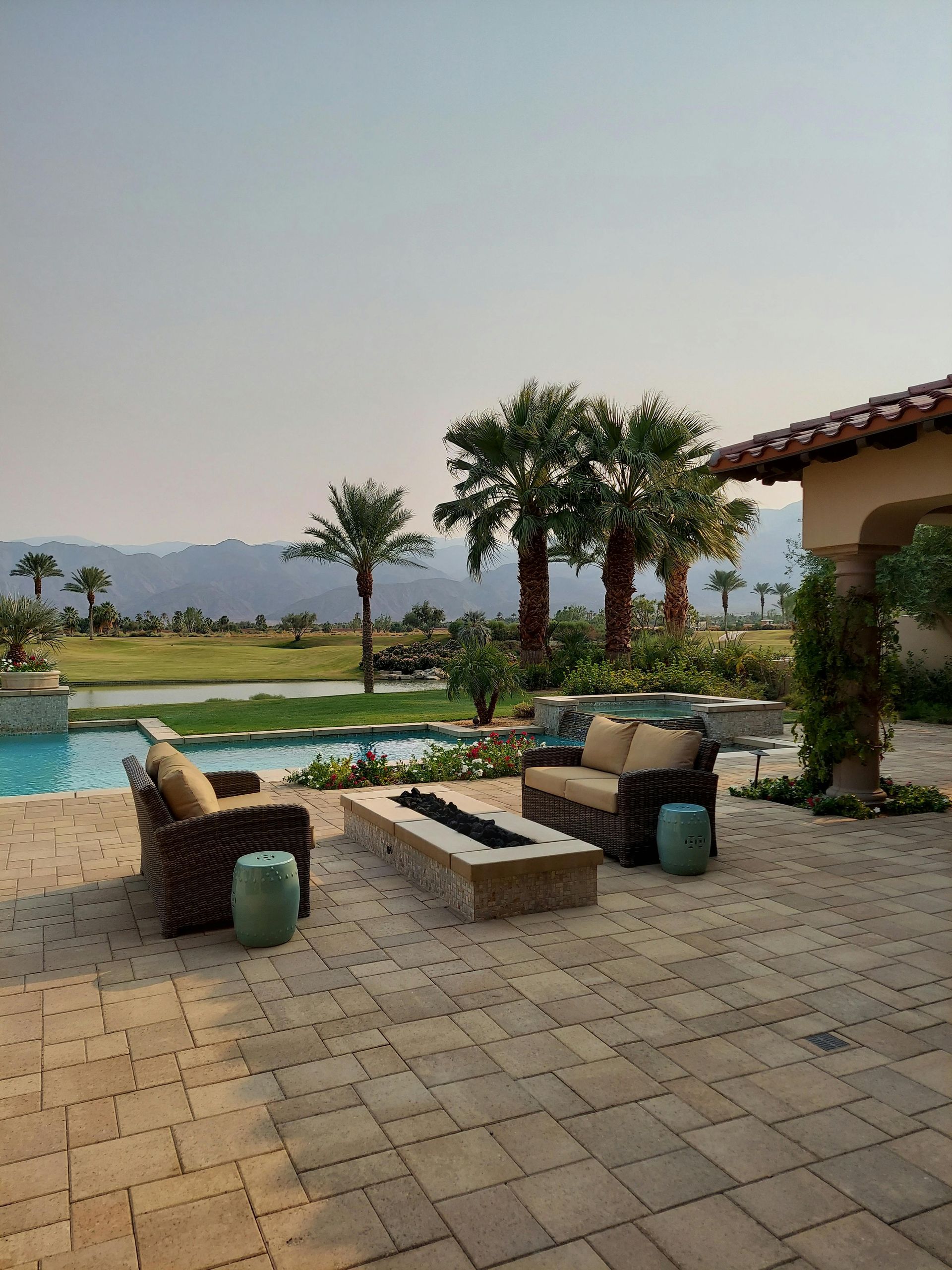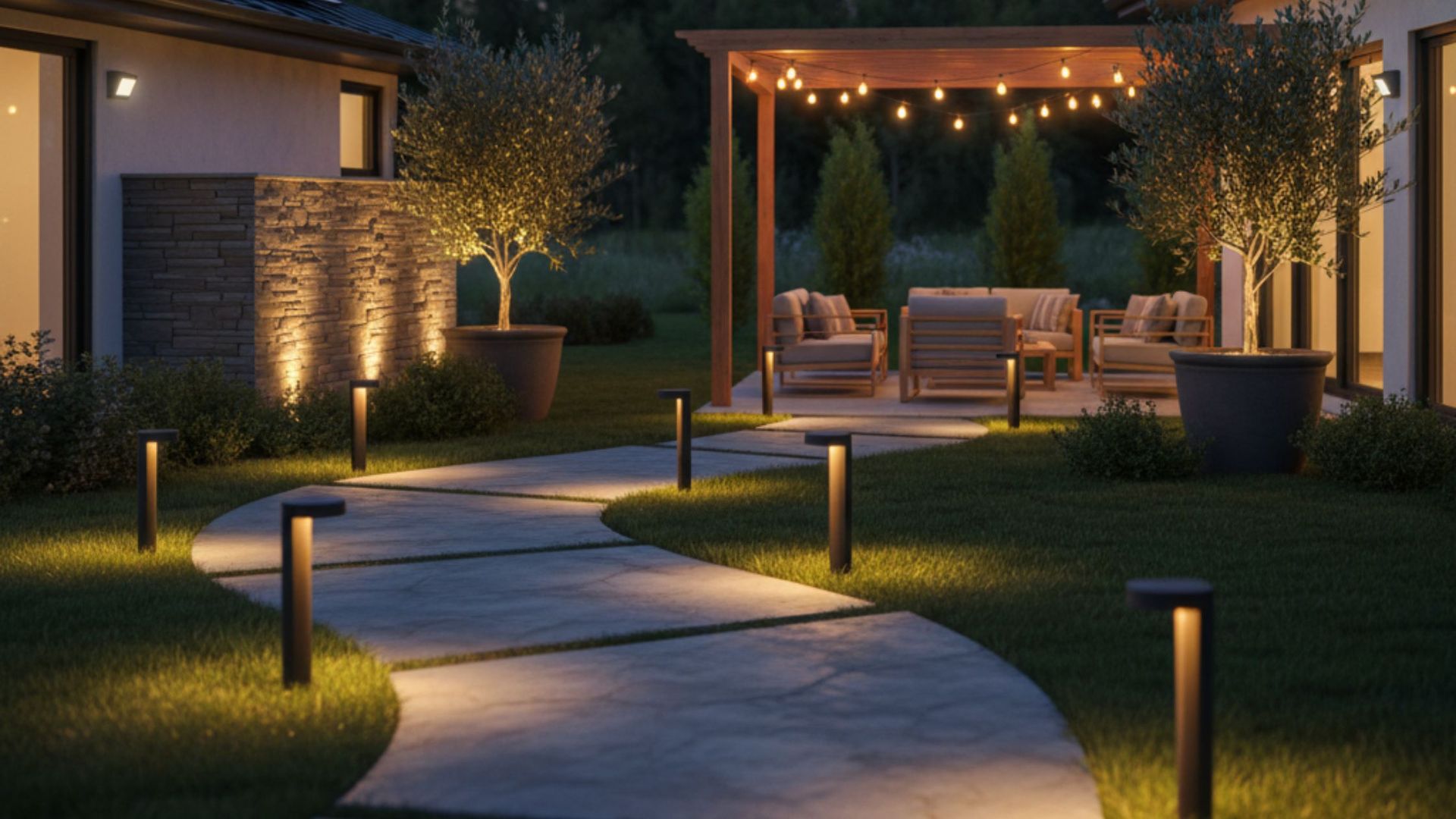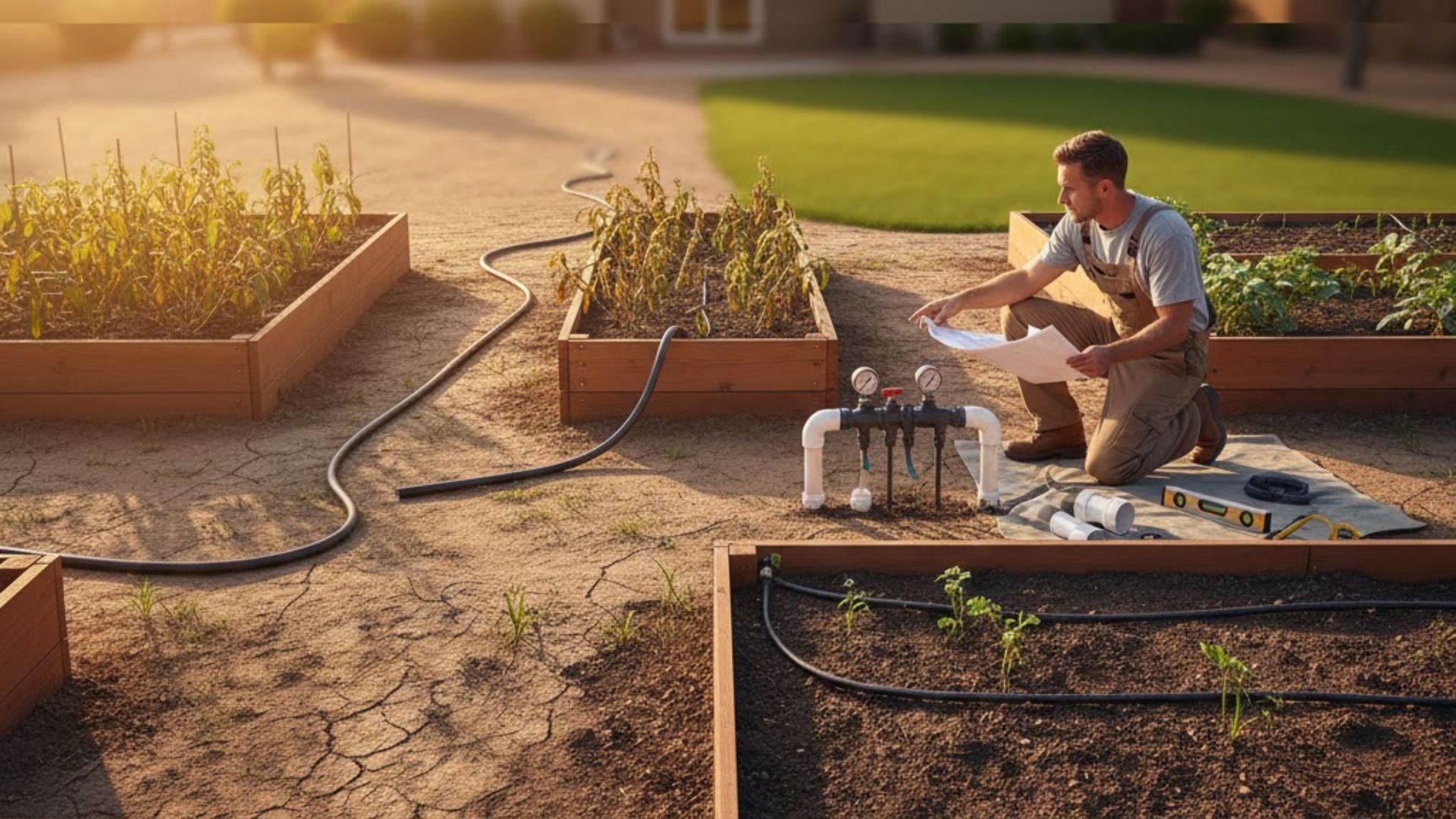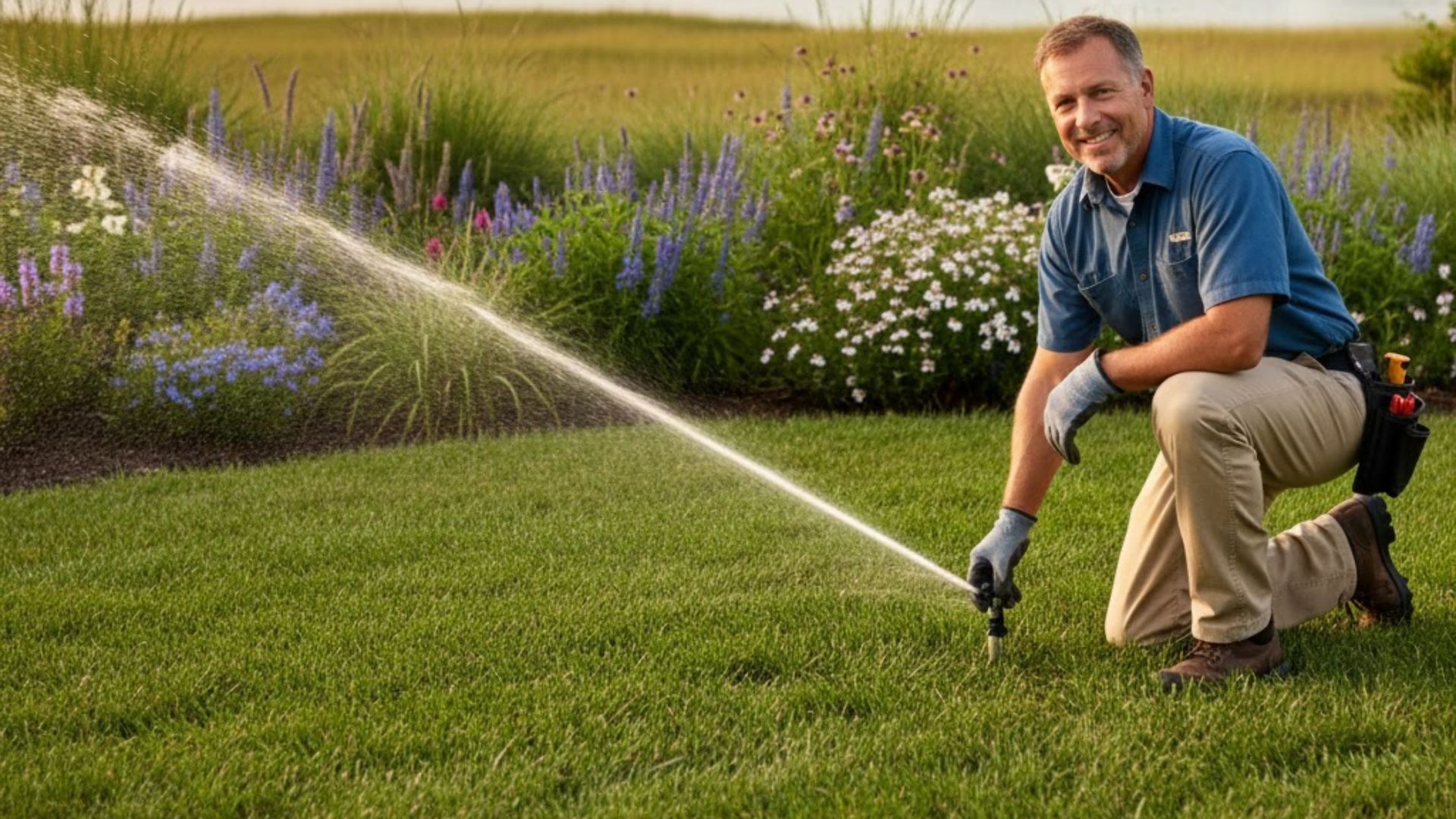How Does a Custom Drainage System Prevent a Wet Basement or Soggy Yard?

Excess water around your home’s foundation can wreak havoc on structural integrity and turn your lawn into a swamp. A custom drainage system, designed with foundation protection drainage in mind, redirects water before it becomes a problem, transforming soggy yards into vibrant outdoor spaces and keeping basements dry. In this guide, we’ll cover:
- Why water intrusion is a common issue in Hampton Roads
- The essential components of a custom drainage system
- How elements like French drains, sump pumps, and gutters work together
- The benefits: protecting your foundation, enhancing yard usability, and boosting property value
- Why hrirrigation.com is the go-to expert for custom solutions
- Maintenance tips for long-lasting performance
- Answers to frequently asked homeowner questions
Whether you’re dealing with clay-heavy soil, steep slopes, or heavy rain, understanding how a custom drainage system integrates multiple water-management strategies will help you protect your home and landscape.
Why Are Wet Basements and Soggy Yards Common in Hampton Roads?
In Hampton Roads, wet basements and waterlogged yards are often due to unique soil conditions, grading issues, and pressure buildup against foundations. These factors can overwhelm standard runoff control measures, leading to persistent moisture problems.
Key Causes at a Glance:
- Compacted soil with high clay content
- Poor yard grading and slope design
- Hydrostatic pressure pushing water through foundation walls
- Frequent heavy rainfall in coastal Virginia
Understanding these root causes highlights why generic drainage solutions often fall short and why a custom drainage system is crucial for lasting protection.
How Do Soil Compaction and Clay Soil Impact Drainage?
Compacted soil and clay-rich substrates act like a sponge, holding water and preventing it from draining properly. Clay particles swell when wet, reducing pore spaces and slowing infiltration. For example, yards in Suffolk can stay saturated for days after a storm because runoff can’t penetrate compacted clay layers.
The Impact of Soil Composition on Drainage
Research shows that soil composition significantly affects water drainage and retention. Clay-rich soils, in particular, impede water infiltration due to their small pore spaces and swelling properties when wet, leading to surface pooling and increased hydrostatic pressure. This understanding is crucial for designing effective drainage solutions.
- Water retention increases hydrostatic pressure.
- Surface pooling attracts pests and damages turf.
- Slow infiltration leads to runoff accumulation in low spots.
Recognizing clay’s water-holding nature sets the stage for targeted solutions such as sub-surface French drains and soil amendment.
What Role Does Improper Yard Grading Play in Water Accumulation?
Poor grading allows rainwater to flow toward, rather than away from, your home’s foundation. When the yard slope is less than 2% away from the house, runoff follows the path of least resistance—often into your basement or low-lying lawn hollows.
- Negative or flat slopes encourage water pooling around footings.
- Uneven terraces create localized soggy patches.
- Uncontrolled sheet flow erodes topsoil and damages landscaping.
Proper yard grading integrates seamlessly with foundation protection drainage to redirect surface runoff down natural contours.
The Role of Grading in Water Management
Proper yard grading is essential for directing surface water away from foundations. A slope of at least 2% away from the house is recommended to prevent water from pooling near the foundation, which can lead to water intrusion and structural damage. This proactive approach is a key component of effective drainage systems.
How Does Hydrostatic Pressure Contribute to Basement Water Intrusion?
Hydrostatic pressure builds when groundwater rises against foundation walls, pushing moisture through cracks and porous concrete. Elevated water tables after prolonged rainstorms are common in Virginia Beach, where coastal geology keeps the groundwater high.
- Pressurized water finds weaknesses in foundation mortar or cracks.
- Persistent moisture fosters mold, mildew, and structural decay.
- Interior bead of water can overwhelm simple sealants or interior systems.
Mitigating hydrostatic pressure requires exterior perimeter drains and interior sump pumps working in concert.
How Does Heavy Rainfall Impact Water Runoff and Flooding?
Coastal storms and summer downpours deliver inches of rain in hours, exceeding the absorption capacity of most yards. Without adequate stormwater management, runoff floods driveways, saturates lawns, and tests your home’s drainage defenses.
- Rapid runoff intensity erodes soil and overwhelms gutters.
- Flash flooding can exceed the design limits of shallow drains.
- Unchecked roof runoff contributes up to 40% of total water load.
Addressing intense rain events demands a multi-component system designed for Hampton Roads’ climate.
What Is a Custom Drainage System and How Does It Work?
A custom drainage system is a property-specific network of components—French drains, sump pumps, grading, gutters—designed to collect, divert, and discharge excess water. By evaluating soil type, topography, and rainfall patterns, experts map out a system that channels runoff away from vulnerable areas before water intrusion occurs.
Custom solutions go beyond off-the-shelf kits by adapting pipe depth, filter fabric, and discharge locations to each yard’s unique conditions. This holistic approach ensures roof, surface, and sub-surface water are all managed in an integrated manner.
What Components Make Up a Custom Drainage System?
A comprehensive system typically includes:
- French drains for sub-surface groundwater collection
- Perimeter sump pumps to lift water from pits and discharge it safely
- Proper yard grading to direct surface water away from foundations
- Gutters and downspout extensions for roof runoff control
- Dry wells and catch basins for localized water storage
- Rain gardens and permeable pavers for sustainable infiltration
How Are Custom Solutions Designed for Unique Property Needs?
Designing a tailored system begins with a site assessment: soil percolation tests, slope measurements, and rainfall analysis. Factors such as clay content, nearby waterways, and local building codes guide the selection of pipe diameter, trench depth, and discharge points.
For instance, a low-lying backyard in Chesapeake with heavy clay soil might need deeper French drains lined with filter fabric and a sump pump discharge to a dry well, whereas a sloped yard in Yorktown could rely primarily on regrading and surface swales.
How Does a Custom Drainage System Divert Water Away from Foundations?
By installing sub-surface drains at footing level and grading the soil to a minimum 2% slope away from the structure, a custom drainage system intercepts groundwater and surface runoff before it reaches foundation walls. Collected water is guided into pipes and directed to discharge areas—storm drains, dry wells, or safe daylight exits—preventing hydrostatic pressure and moisture intrusion.
What Is a French Drain and How Does It Reduce Hydrostatic Pressure?
A French drain consists of a perforated pipe laid in a gravel-filled trench, often wrapped in filter fabric. Groundwater seeps through the gravel, enters the pipe, and is carried away from foundation walls. By intercepting water before it builds pressure, French drains prevent seepage and structural stress.
How Do Sump Pumps Remove Water from Basements Effectively?
Sump pumps sit in a dedicated pit beneath floor level and activate automatically when water rises. They pump accumulated water through a discharge pipe to a safe location—often the street or a dry well. This direct removal of water halts basement flooding even during extended wet periods.
Why Is Yard Grading Essential for Surface Water Management?
Correct yard grading means sculpting the soil so water flows at least 2% away from the home’s perimeter. This simple adjustment keeps surface water moving toward designated drains or low-impact outlets, preventing yard saturation and protecting foundation integrity.
How Do Gutters and Downspout Extensions Protect Your Property?
Roofs can shed thousands of gallons of rainwater during heavy storms. Gutters collect that water and downspout extensions direct it at least 10 feet from the foundation. This roof runoff control prevents the erosion of soil around footings and eliminates a major source of basement water intrusion.
What Are Dry Wells and Catch Basins Used For in Drainage?
Catch basins gather surface runoff in hard-scaped areas like driveways, while dry wells provide underground storage where water can slowly percolate back into the soil. These structures reduce stress on municipal storm sewers and manage isolated pooling without creating runoff nuisances.
How Do Rain Gardens and Permeable Pavers Support Sustainable Drainage?
Rain gardens use native plantings and amended soil to absorb stormwater, reducing runoff volume and filtering pollutants. Permeable pavers allow infiltration through gaps, dispersing water directly into underlying aggregate. Both green infrastructure strategies complement engineered drains by enhancing on-site recharge.
What Are the Benefits of Installing a Custom Drainage System?
Investing in a tailored drainage network delivers immediate and long-term advantages:
- Foundation Protection and Structural Integrity A robust drainage system prevents hydrostatic pressure and water infiltration, avoiding cracks, mold growth, and costly repairs.
- Elimination of Soggy Yards and Pest Infestations Dry soil discourages mosquitos and protects turf health, expanding usable outdoor living space.
- Increased Property Value and Curb Appeal A well-drained landscape boosts resale value and overall marketability.
- Soil Erosion Control and Soil Health Grading and flow management preserve topsoil, maintain nutrient levels, and prevent washouts.
- Reduced Insurance Claims and Maintenance Costs Proactive drainage minimizes flood damage expenses and routine yard repairs.
These combined benefits demonstrate the ROI of a custom drainage system designed for Hampton Roads’ conditions.
Why Choose hrirrigation.com for Custom Drainage Solutions in Hampton Roads?
Harnessing local expertise and advanced methods, hrirrigation.com delivers drainage designs that outpace conventional approaches. Our unique advantages include:
- Deep knowledge of Hampton Roads’ clay soils, coastal water tables, and building code requirements
- Proprietary site-assessment protocols that optimize component selection and placement
- Certified installers and project managers ensuring reliable, on-time implementation
- Ongoing customer support and maintenance programs to preserve system performance
Ready to transform your soggy yard or troubled basement? Explore our portfolio of drainage solutions and read real-world results in our customer reviews.
How Can You Maintain Your Custom Drainage System for Long-Term Performance?
Routine maintenance preserves component effectiveness and extends system lifespan.
- French drains and sump pumps require annual inspections to clear debris and test pump operation.
- Yard grading and gutter systems benefit from seasonal checks—especially after storms—to confirm proper slope and unobstructed downspouts.
- Schedule professional check-ups every 2–3 years to identify early signs of pipe settling, root intrusion, or soil compaction.
By integrating these practices, you ensure reliable drainage and protect your investment.
What Are Common Questions About Preventing Wet Basements and Soggy Yards?
Below are concise explanations of the home-owner questions most often posed about water intrusion and yard flooding.
What Is the Best Way to Prevent a Wet Basement?
The most effective solution is a complete custom drainage system combining exterior French drains at footing level, an interior sump pump, and properly graded soil that channels runoff away from your foundation.
How Can I Fix Standing Water in My Yard?
Address standing water by reshaping the yard slope to a minimum 2% away from structures, adding a French drain or dry well in the low spot, and extending downspouts at least 10 feet from the house.
What Are the Signs of Poor Foundation Drainage?
Look for standing water adjacent to the foundation, basement floor cracks, efflorescence on walls, mold growth, and persistently soggy lawn patches near footings.
How Do French Drains Compare to Dry Wells for Yard Drainage?
French drains excel at continuously collecting groundwater and channeling it away, while dry wells primarily store intermittent surface runoff. Many properties benefit from using both in tandem.
How Much Does a Custom Drainage System Cost in Hampton Roads?
Investment varies by property size, soil conditions, and system complexity, but most homeowners in Chesapeake, Virginia Beach, and Suffolk find that tailored solutions pay for themselves through avoided damage, reduced maintenance, and enhanced property value.
Installing a well-designed custom drainage system prevents water damage, preserves landscape beauty, and secures your home’s foundation. Partner with hrirrigation.com to get a complimentary site assessment and experience the difference that expert engineering and local knowledge bring.
Visit us at hrirrigation or contact our team today to schedule your free consultation.

